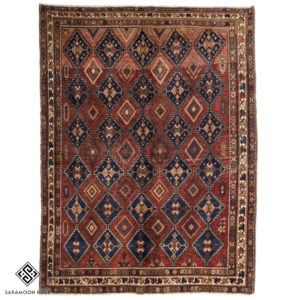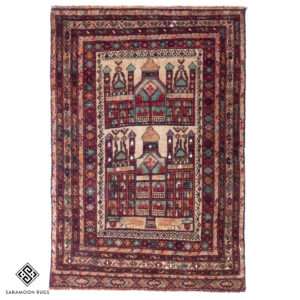Showing 1–20 of 170 results
-

Hand-knotted Antique Bakhtiyari Persian Rug, 8’2″x5’1″, Code:1148
$ 1,650.00 -

Hand-knotted Antique Bakhtiyari Rug, 10’2″x7’5″, Code:1119
$ 2,890.00 -

Hand-knotted Antique Malayer Rug, 6’6″x3’3″, Code:1169
$ 720.00 -

Hand-knotted Antique Qashqaei Rug, 10’7″x6’6″, Code:1115
$ 2,390.00 -

Hand-knotted Antique Sirjan Rug, 6’6″x4’11”, Code:1179
$ 1,490.00 -

Hand-knotted Antique Sirjan Rug, 6’6″x5’0″, Code:1077
$ 1,890.00 -

Hand-knotted Bakhtiyari Rug, 7’10″x5’6″, Code:1149
$ 1,900.00 -

Hand-knotted Bakhtiyari Rug, 7’11″x4’2″, Code:1005
$ 1,290.00 -

Hand-knotted Bakhtiyari Tribal Persian Rug
$ 1,890.00 -

Hand-knotted Bakhtiyari Vintage Rug, 5’11″x3’8″, Code:1020
$ 990.00 -

Hand-knotted Balooch Prayer Rug, 4’7″x3’1″, Code:1029
$ 650.00 -

Hand-knotted Balooch Small Rug, 5’5″x3’8″, Code:1007
$ 750.00 -

Hand-knotted Gharajeh (Qarajeh) Runner Rug, 12’10″x3’4″, Code:1128
$ 1,800.00 -

Hand-knotted Gharajeh (Qarajeh) Vintage Runner Rug, 10’8″x3’3″, Code:1124
$ 2,100.00 -

Hand-knotted Ghoochan Rug, 8’6″x4’5″, Code:1006
$ 1,490.00 -

Hand-knotted Hamedan Runner Rug, ’10″x3’3″, Code:1011
$ 1,990.00 -

Hand-knotted Hamedan Runner, 9’10″x2’6″, Code:1012
$ 1,500.00 -

Hand-knotted Hamedan Vintage Rug, 6’4″x3’11”, Code:1018
$ 950.00 -

Hand-knotted Hamedan Vintage Rug, 6’5″x3’3″, Code:1015
$ 950.00 -

Hand-knotted High Pile Heriz Rug, 9’8″x7’5″, Code:1144
$ 2,880.00
